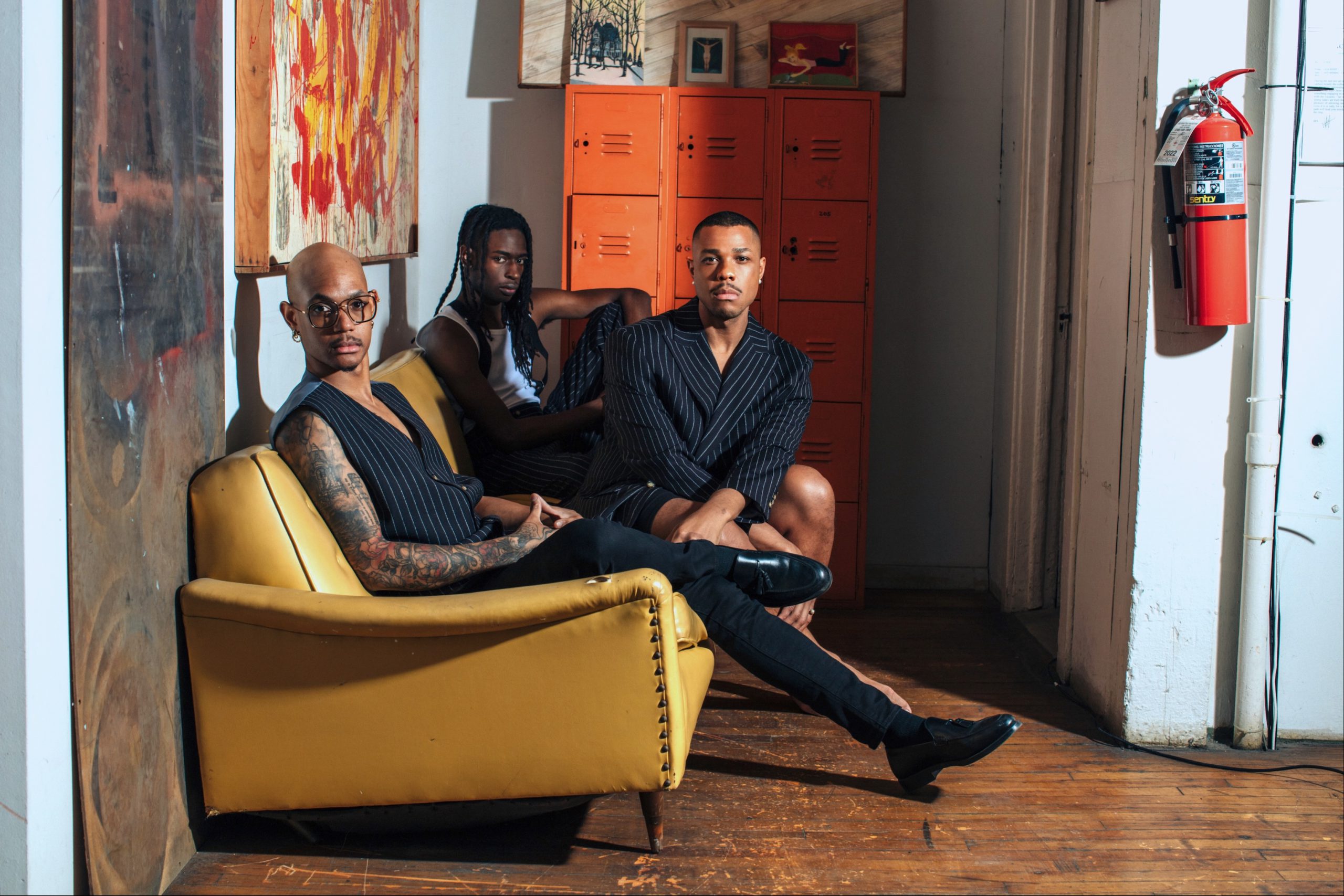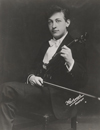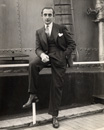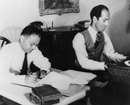Reviews
Davóne Tines's ROBESON Live: A Fumbled Triumph
 CHICAGO— Outside Chicago’s Harris Theater, an LED marquee announces what’s on that evening. On Oct. 1, it beamed a sultry portrait of bass-baritone Davóne Tines—sharply dressed, his shirt unbuttoned enough to reveal a string of pearls. “ROBESON: An Electro-Gospel Acid Trip,” the marquee read.
CHICAGO— Outside Chicago’s Harris Theater, an LED marquee announces what’s on that evening. On Oct. 1, it beamed a sultry portrait of bass-baritone Davóne Tines—sharply dressed, his shirt unbuttoned enough to reveal a string of pearls. “ROBESON: An Electro-Gospel Acid Trip,” the marquee read.
That caused a passing gaggle of tourists to stop dead in their tracks. “Look at this!” one drawled, sounding equal parts amused and scandalized.
No one does one-man opera quite like Tines, 37. Recently released as a compact 40-minute album on Nonesuch, ROBESON (its “N” is stylized backwards) is cut from the same conceptual cloth as Tines’s other projects (see: Recital No. 1: MASS, The Black Clown, Everything Rises with violinist Jennifer Koh). As a fantasia on the life of artist–activist Paul Robeson, it may be Tines’s most focused project to date. Tines sings songs associated with Robeson—"Ol’ Man River,” “Nobody Knows the Trouble I’ve Seen,” Bach’s “Christ lag in Todesbanden”—interspersed with other potent sounds. A running shower references Robeson’s suicide attempt in a Moscow hotel bathroom. Later, we hear Robeson’s 1958 comments to a Carnegie Hall audience before reciting a monologue from Othello.
Throughout it all, Tines never attempts to portray Robeson himself. Instead, he muses on his fellow bass-baritone’s life and legacy, sometimes seemingly in real time. Though ROBESON’s arrangements are carefully, even dotingly scored, Tines’s boundless interpretive freedom—releasing torrents of melismas, shooting up into falsetto—gave the feeling that he, too, was making spontaneous musical discoveries along the way.

Davóne Tines and TRUTH: John Bitoy, Tines, and Khari Lucas
Nor is the “electro-gospel acid trip” mere marketing. Tines’s band, THE TRUTH—Tines has a penchant for all caps—touches on those genres and more. Where called for, pianist John Bitoy played with an enunciated lyricism lifted from the Black church tradition. Sound artist and electric bassist Khari Lucas (who performs under the alias Contour) conjured soundscapes at turns dreamy and nightmarish. In a feature unique to ROBESON’s Chicago performance, folk and classical traditions collided in a medley-style overture for string quartet, played by D-Composed and inventively arranged by Chicago composer Ahmed Al Abaca. Later, “Scandalize My Name” morphed the Harris stage into a discothèque, throbbing with electric piano and four-on-the-floor beats.
Much like the Nonesuch album, ROBESON resisted ending on a crowd pleaser. That was the penultimate number, “This Little Light of Mine,” which in Tines’s rendering started like a dirge and ended with a heaven-scraping head voice backed by an exultant band. If “This Little Light…” is rousing on the album, it’s galvanic in person. Powerful lighting design worked in tandem with the music, brightening from dim to blazing over the course of the performance. At least one attendee was roused enough to stand mid-performance, just as one would at church.
But ROBESON goes on, winding through an “Epilogue” of verses by Lincoln Center poet-in-residence Mahogany L. Browne and ending—inevitably—with “Ol’ Man River.” The song became a calling card for Robeson after he amended Oscar Hammerstein II’s original lyrics into a more empowering anthem. In R OBESON’s liner notes, Tines says he was asked to sing “Ol’ Man River” again and again at the beginning of his career. “To be honest, I didn’t know much about [Robeson] at the time and became annoyed that people kept asking me to sing what I considered a minstrel song,” he writes.
Tines places his discomfort—and, we imagine, Robeson’s—front and center. A lugubrious, almost queasy opening grows clenched, angry; Tines repeats “I’m tired” with searing finality, as though unearthing emotions the famously poised Robeson was forced to smother. It concludes in a cresting triumph, or perhaps a release. ROBESON could have ended no other way.
A lost performance
Whereas ROBESON’s lighting design was excellent enough to merit comment, the sound, all amplified, stuck out equally, and for the wrong reasons. It was consistently hyper-compressed and staticky, as if heard through a busted iPhone speaker. When D-Composed first began to play, it sounded like an old, scratched-up LP. It took some time to realize that the effect wasn’t intentional electronic manipulation. Tines’s voice, usually so resplendent that one can practically visualize its overtones, was flattened to a cardboard cutout of itself.
As confirmed by a spokesperson, the sound operation and equipment were solely in the hands of the Harris Theater. The result was a shocking fumble and catastrophic to the Chicago ROBESON. What could have been one of the fall’s most inspiring performances will instead be remembered as the night bad tech ruined great artistry.
TRUTH photo by Noah Elliott Morrison
Davóne Tines was Musical America's 2022 Vocalist of the Year





 FEATURED JOBS
FEATURED JOBS

 RENT A PHOTO
RENT A PHOTO


